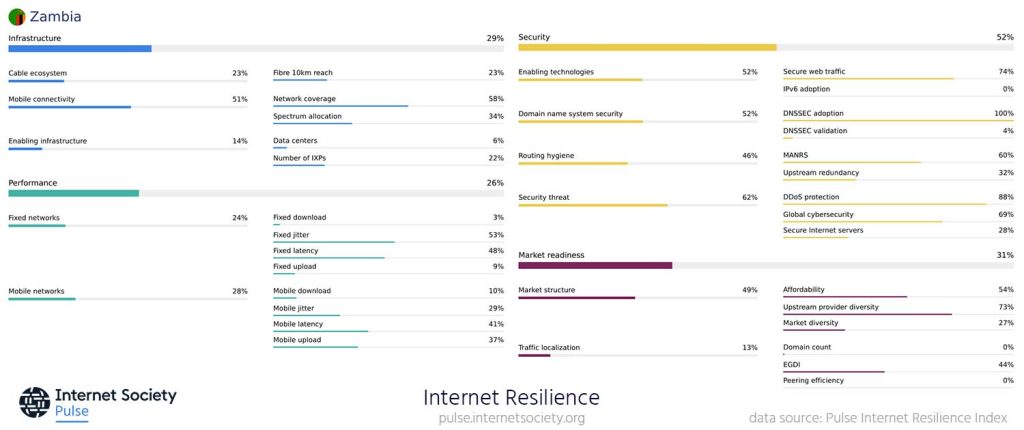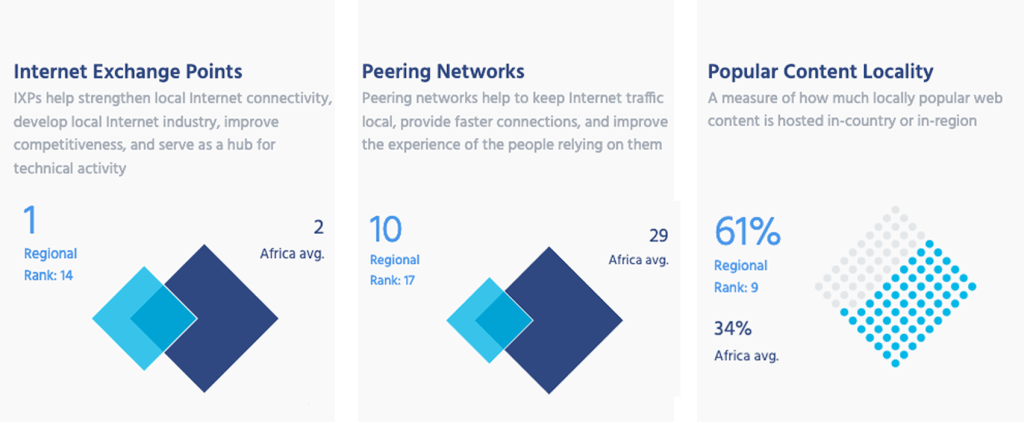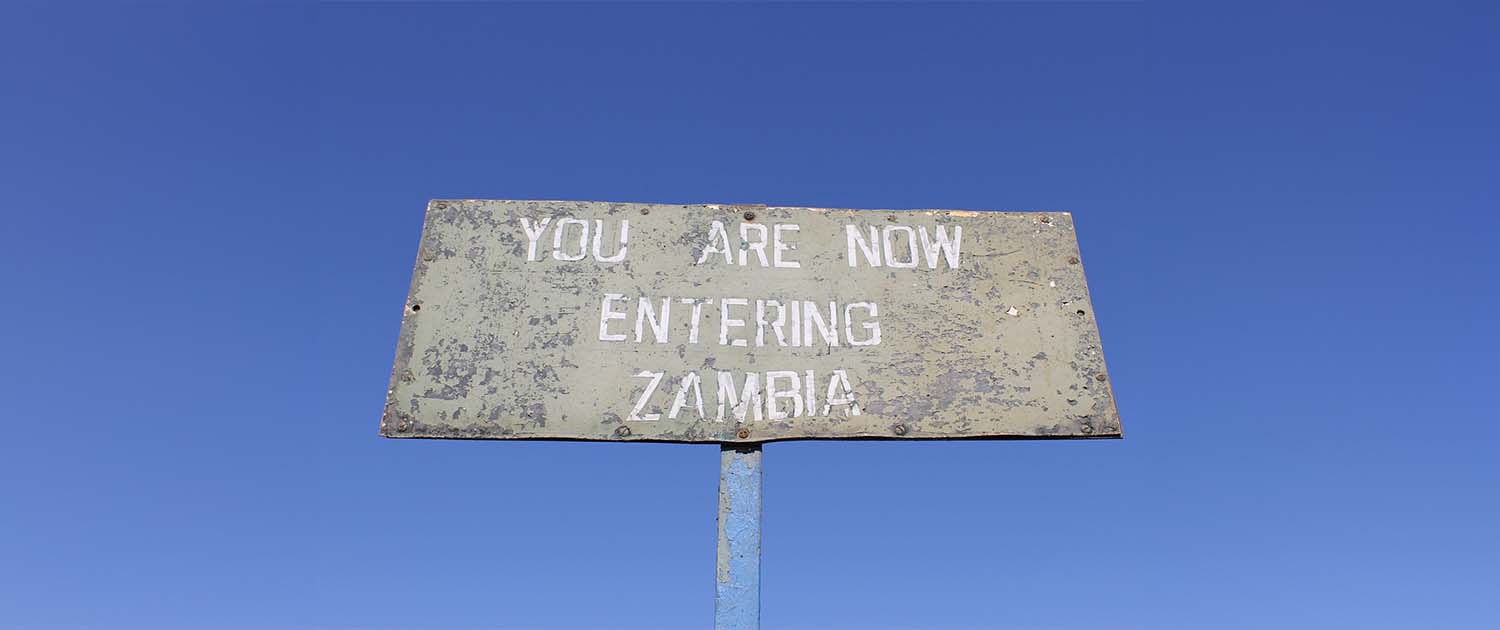Zambia’s Ministry of Technology and Science recently announced via Facebook that the World Bank will pledge USD 100 million to fund the Digital Zambia Acceleration Project (DZAP).
The project seeks to increase access to the Internet and digitally enabled services in the country, including expanding broadband and last-mile infrastructure.
Pending approval by the World Bank Board, this funding comes at a critical point in Zambia’s Internet development and will allow it to expand on some critical foundational components it has already established.
Multiple Challenges Impacting Internet Usage
According to the Pulse Country Report, fewer than one in four people in Zambia currently use the Internet, well below the continent’s average of 39%.
If we look at the Pulse Internet Resilience Index profile for Zambia (Figure 1) we can identify several contributing factors to this low uptake, including:
- Poor Internet performance—Zambia’s average fixed broadband (19.31 Mbps) and mobile broadband (22.27 Mbps) download speeds rank 114th and 136th respectively (OOKLA).
- Lack of fiber infrastructure and network coverage.
- Affordability—Fixed (5GB plan) and mobile (2GB plan) broadband costs USD 13.45 and USD 2.15, respectively (ITU), a considerable cost when nearly 60% of the population lives in poverty.

Signs of Internet Resilience Increasing
Despite these challenges, several key indicators and trends suggest that Zambia’s overall resilience and usage are improving and will continue to improve, hopefully, quicker, if the DZAP leverages and expands on them. The most notable are enabling infrastructure, including data centers and Internet Exchange Points, which are critical for hosting and delivering local traffic.
An IXP is a physical place, sometimes inside a data center, where different networks send traffic to one another. This is known as peering, and it is how one network operator can send data from their network to another without having to pay. Peering is part of what makes Internet services faster, more reliable, and cheaper.
Zambia has one IXP (LuIX) of which 10* of the 24 networks registered in Zambia connect (peer) with it (Figure 2). Its largest member, Zamtel (AS37154), is Zambia’s third largest ISP after Zain Zambia (AS37287) and MTN Zambia (AS36962), which provide 55.7 and 28.1% of direct connectivity to Internet users in Zambia, according to IIJ’s Internet Health Report.
(* According to the LuIX website, it currently has 14 members. Pulse IXP data is sourced from PeeringDB)

Further, more than 60% of Zambia’s top 1,000 most popular websites/web services are hosted in-country or in-region (Figure 3).
Figure 3 — 61% of Zambia’s top 1,000 most popular websites are hosted in the region, mostly on Cloudflare servers. 149 sites are hosted in Zambia. Source: Pulse Country Report.
Hosting content locally reduces the time it takes users to access their favorite content, improving overall performance. It is also particularly useful when there are Internet outages, like those that affected the West and East Coast of Africa earlier this year, which reduce access to content hosted outside the region.
Increasing peering will further reduce this latency and mitigate the effect that any major local Internet Service Provider outages have on government and emergency services, banking, and other services (see recent case studies for Australia, Canada, and Italy).
Read: 50/50 Vision to Keep Internet Traffic Local, Efficient, and Cost-effective
Blackouts
An increasingly important Internet resilience indicator that Pulse does not yet take into consideration is energy resilience. Power blackouts are contributing to a growing number of Internet outages, including major outages in Kenya and Tanzania this year (see Cloudflare report for Q1 and Q2 2024).
Read: Electricity and Internet Resilience
According to reports, Zambia’s mobile operators are struggling to cope with load-shedding blackouts that last as long as 14 hours a day. Power outages add further costs to Internet services, including fuel for backup generators for cell sites and more frequent servicing cycles.
This will be another important area where additional funding will help mitigate the risk of these challenges.
The World Bank Board will meet to approve the project in March 2025.
Tell Your Own Data-Driven Stories With the Pulse API
Image by scooterenglasias from Pixabay


